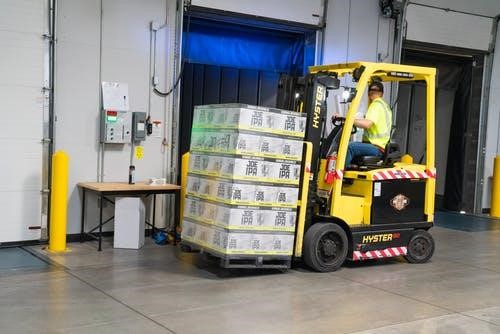Protect Shipments and Safeguard Profits
One of the biggest risks any business faces is that of transit damage to goods being shipped to customers. When goods arrive damaged, customers become dissatisfied, and they demand their money back. In the best-case scenario, the customer will accept a replacement, in which case, you’ll salvage the sale, but still be out the initial shipping cost, as well as the cost of the damaged product. In the worst-case scenario, you’ll lose the sale and maybe even the customer, potentially damaging your company’s reputation in the process.
Fortunately, you can do more than just crossing your fingers and hoping for the best when it comes to shipping your products safely. Make sure you know what the products you’re shipping go through during shipping, how fragile they really are, and what packing materials are needed for their optimum protection.
Assess the Fragility of the Product Being Shipped
If you’re shipping products that are fragile at all, you need to understand just how fragile they are, so you know exactly what packaging materials are best to protect them. Often, manufacturers employ fragility testing to understand how their products will withstand not only the vibration and impact stresses of shipping, but also the wear and tear of everyday use. If at all possible, obtain fragility testing data for the products you’re shipping.
It’s also a good idea to establish company best practices for shipping fragile items – that’s how mega-retailers like Amazon can ship billions of packages a year and have most of them reach their destinations in one piece. Best practice guidelines will help your employees choose the best packing materials for fragile items like glass, electronics, medical equipment, and so on.
Know What Products Go Through During Shipping
Are your fragile shipments capable of withstanding a four-foot drop? Your package might slip from atop a pile of other boxes in the back of the delivery truck. Can your shipment withstand an impact? A careless delivery driver might decide to toss it onto the recipient’s porch without leaving the truck.
Your packages might be jostled, rattled, and vigorously shaken along a bumpy, difficult delivery route. They might be left out in the rain, thrown, dropped, or crushed. You need to know what stresses your packages will undergo during the shipping process, so you can have the right packing supplies on-hand to make sure they’re prepared to withstand those stresses when you send them out. Using an impact indicator can help you understand the impacts, vibrations, and other stresses packages encounter when shipped using a specific carrier or along a certain route.
Choose the Best Packing Materials
When it’s time to send your shipments out, you need to choose the right packing materials to keep fragile items safe. The right packing materials might be more expensive, but they’ll save you the cost of dealing with damaged shipments, refunds, and angry customers.
Fragile materials should be shipping in cardboard boxes with impact protection and void fillers to keep them from shifting around during shipment. Double- or even triple-walled cardboard boxes are best for shipping fragile items, especially large and heavy fragile items. Understand the edge crush test (ECT) rating and bursting test rating for the cardboard boxes you choose – these ratings will help you understand how much force a particular carton can withstand. Double-boxing a fragile item can protect it further from shipping damage.
Impact protection cushions fragile items against external impacts. Bubble wrap, brown paper, packing peanuts, and corrugated roll can cushion fragile contents against external forces. Paper, corrugated roll, and bubble wrap can also help cushion fragile contents from the impact of striking against one another inside a package. Void fillers, like paper, packing peanuts, and bags of air, are also vital for the purpose of keeping fragile contents from rolling around or shifting inside a package and potentially damaging one another.
But, keep in mind that customized shipping packages are available for some fragile items, such as laptop and TV shipping boxes that come complete with Styrofoam corners and foam inserts designed to provide the cushioning that delicate electronics need. If there is a specialized shipping package available for your product, you should use it.
Shipping fragile products is costly enough without the cost of refunding customers for broken items or reshipping damaged product. Take care to ship items with the proper packaging, to protect both your shipments and your bottom line from the costs of transit damage.



